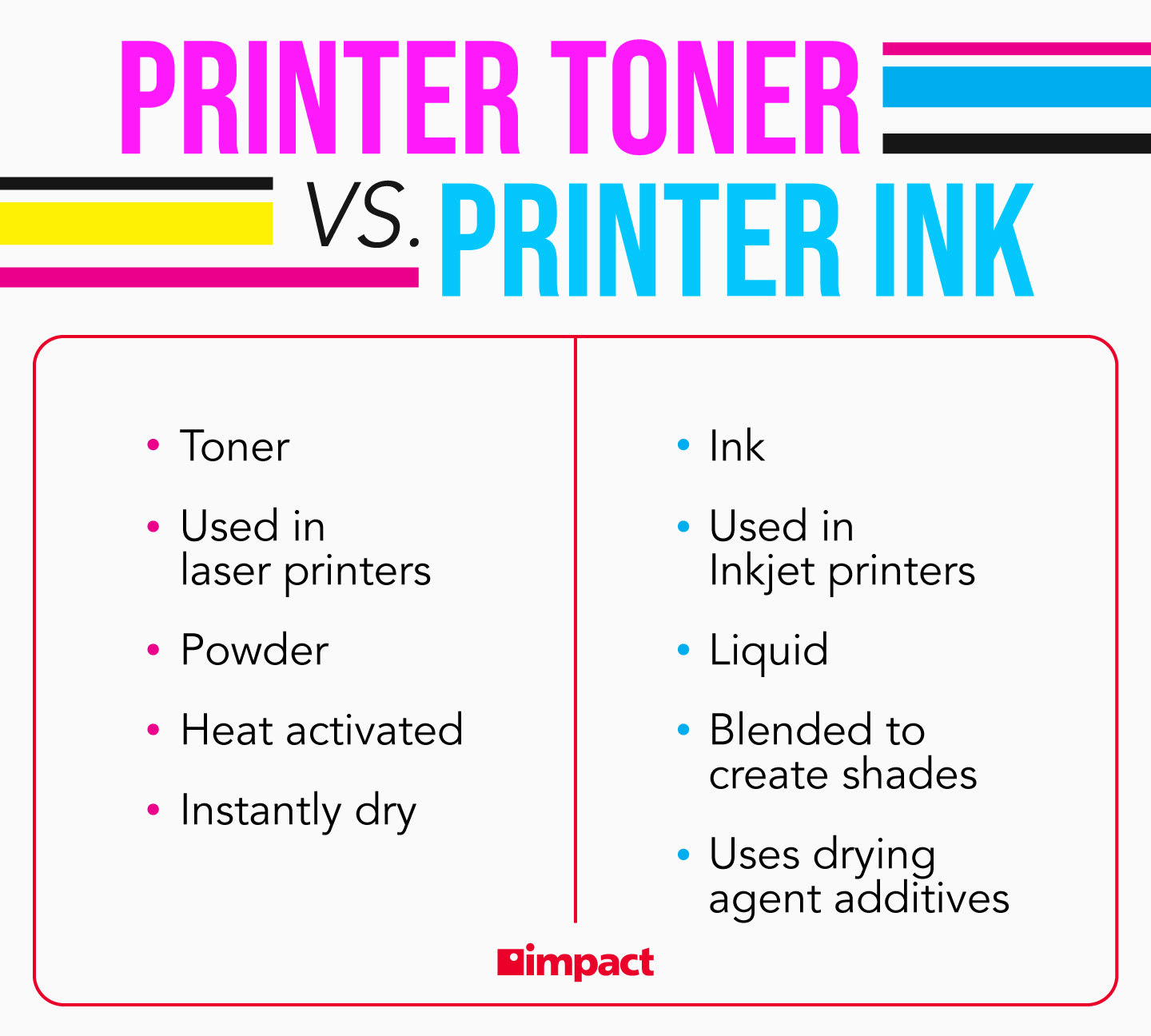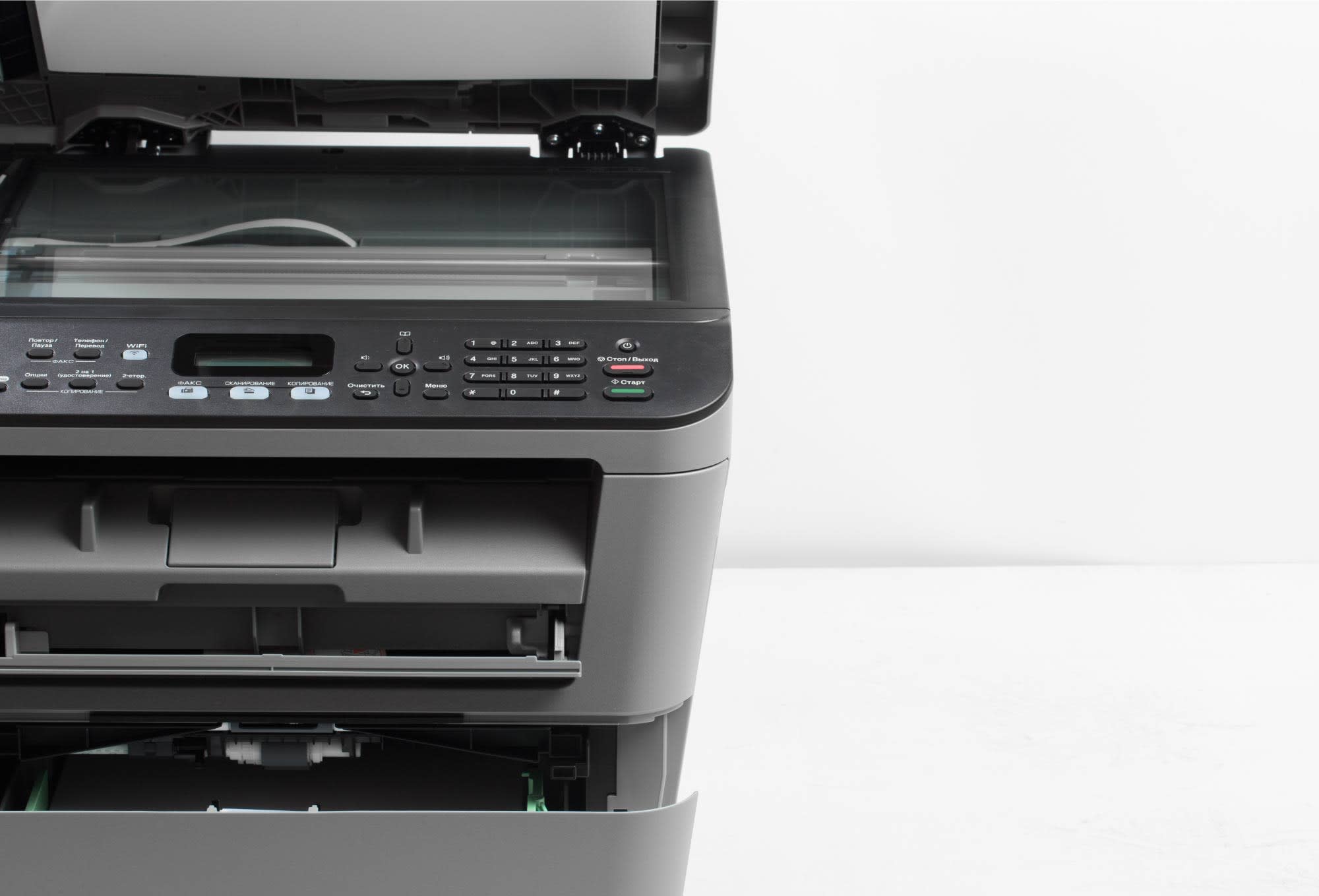Even as organizations digitize as many of their operations and workflows as possible, the ability to print remains vital to many business functions, making it essential to have extra printer supplies in stock. However, it’s important to note that different printers use different materials to create text and images on the page. Some machines use printer toner, while others use printer ink.
Printer toner and printer ink are similar in that they’re the material print machines use in order to transpose the text and images on the screen, to the actual hardcopy paper (or whatever material) on which you’re printing.
If you’re looking to restock your print supplies, but aren’t sure whether your machine uses toner or ink, keep reading to learn about all the differences between these two distinct printing supplies.
Out of ink? Looking for a new machine? Time to upgrade? Get all your printer needs taken care of at the Impact Store!
What Is Printer Toner?
Printer toner is a fine powder used in laser printers and photocopiers to produce text and images on paper. It consists of tiny particles of plastic, carbon, and coloring agents, stored in a toner cartridge inside the printer.
When you print, the printer projects an image of the page onto a drum, a cylindrical component that holds an electrical charge. A laser then alters the charge on the drum where the text or image will appear.
The toner particles are attracted to these charged areas of the drum and then transferred to the paper as it moves through the printer. Finally, the paper passes through a fuser, which applies heat to melt the toner particles and bond them to the paper (kind of like in thermal printing), creating sharp, durable markings that represent the text and images.
What Is Printer Ink?
Printer ink, on the other hand, is a liquid used in inkjet printers to create text and images on paper. It is typically stored in small, removable cartridges that contain different colors of ink, usually cyan, magenta, yellow, and black. These cartridges can be either dye-based or pigment-based, with dye-based inks offering vibrant colors while pigment-based inks provide better durability and resistance to fading.
The inkjet printer works by spraying tiny droplets of ink through microscopic nozzles onto the paper.
The process starts when a print command is issued, and the printer sends electrical signals to a component known as the print head. The print head moves across the paper and uses thermal technology to push the ink out of the nozzles at precise coordinates. This allows the printer to produce detailed and high-quality text or images.
As the print head moves back and forth across the page, it sprays thousands of microscopic droplets in a controlled pattern, layering colors when necessary to create different shades and hues. Because the ink is liquid, it dries quickly upon contact with the paper, resulting in crisp images and text.
Inkjet printers are popular for their ability to handle a wide variety of media and produce high-resolution prints, especially in color printing.
The Main Differences Between Printer Toner and Printer Ink
Printer toner and printer ink differ primarily in their form, how they are applied, and their ideal uses.


